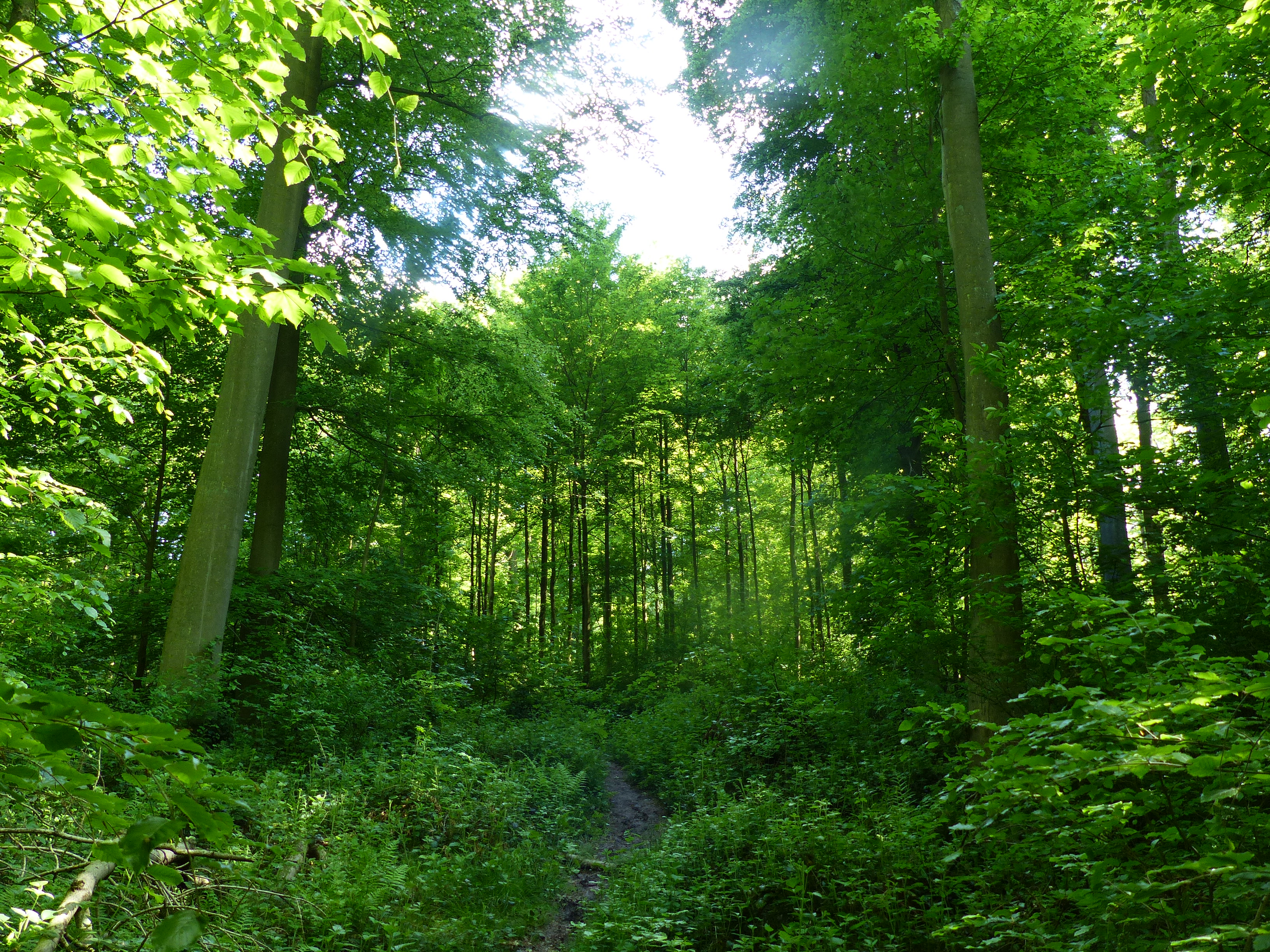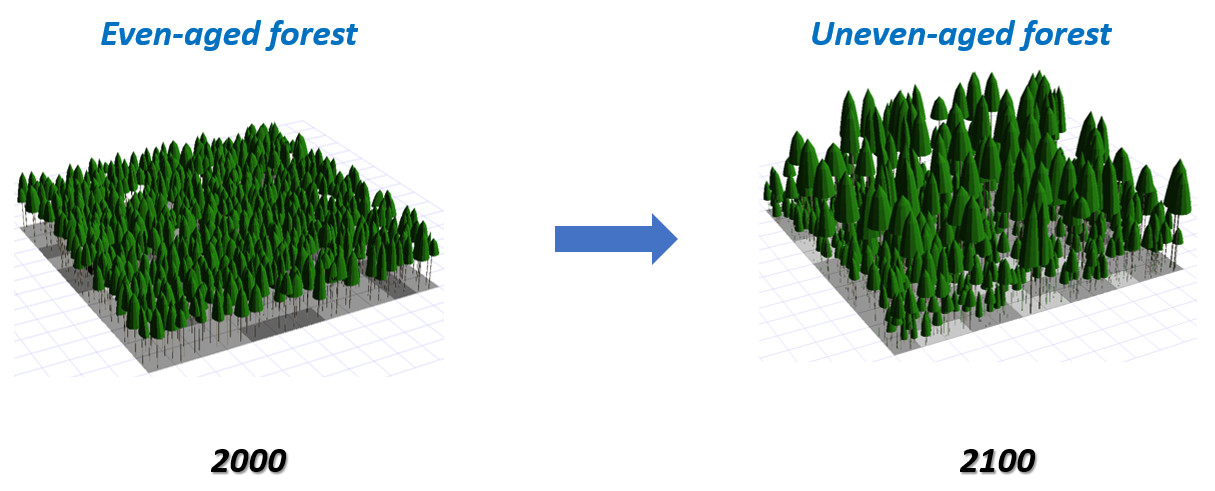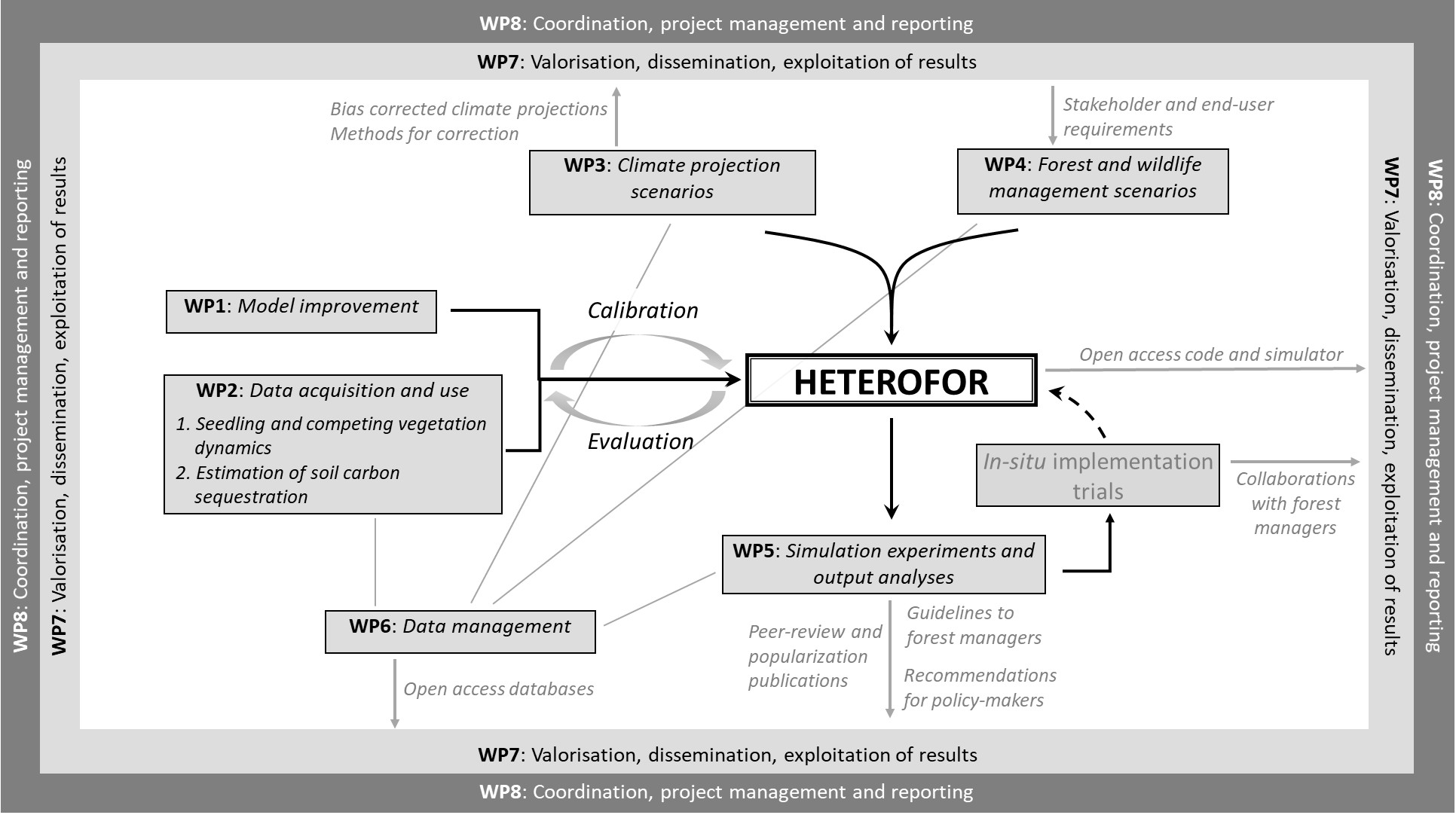To maintain in the long run their multiple ecosystem services (among others, wood production, recreation, soil and water protection, carbon sequestration), forests must be continually regenerated. European and specifically Belgian forests face however various threats. Warm and dry summers weaken trees and seedlings due to water shortage and trigger outbreaks of pests and pathogens. The recent outbreak of bark beetle in Belgium is one example of the consequences of several consecutive warm and dry years (2016-2018). Besides these, the management of wildlife population, and particularly of ungulate population (roe deer, red deer, wild boar) could critically affect forest dynamics as abundant ungulates browse regeneration and affect preferentially some tree species over others modifying forest composition in the long term. In this uncertain and changing context, forest managers must improve the resistance and resilience of forests.
Project description
Context
It has been suggested that this can be achieved by creating uneven-aged and mixed stands following the principles of the close-to-nature or continuous-cover forestry. Indeed, mixing tree species with contrasted functional traits offers a large variety of possible responses to the various stresses and therefore improves the forest recovering capacity after disturbance.
To make the forest more resilient and test innovative management strategies, foresters need guidelines. Unfortunately, one cannot test in situ all possible silvicultural options for each site conditions and climate scenario. Scenario analysis based on model simulations are therefore necessary to select the most promising management practices which can then be tested in situ.

Objectives
For a series of case studies (old Belgian forest stands), the project aims at testing various forest and wildlife management options on tree regeneration success, ecosystem service provision and on soil fertility (sustainability) while taking climate changes into account. To achieve this goal, simulation experiments will be carried out using an individual-based and spatially-explicit model (called HETEROFOR) describing stand dynamics based on resource use (light, water and nutrients).
This model is particularly suitable to test silvicultural routes in structurally-complex and species-diverse stands. It will be however be adapted to account for the effects of ungulate browsing on seedling development and mortality. These experiments will incorporate state-of-the-art regional climate change scenarios produced in the context of the Cordex.be project (http://www.euro-cordex.be/).

Expected impacts
This prospective approach will support policies, for example, by promoting silvicultural operation and wildlife management aiming to increase forest diversity, resistance and resilience. The simulation analysis will allow policy makers and forest managers to realize the possible impact of various forest and wildlife management scenarios according to various climate change scenarios.
In addition, the project will create a modelling tool that could be reused in other contexts to test the impact of forest management strategies while taking the changing environment into account.
A more complete description of the project can be downloaded here.



